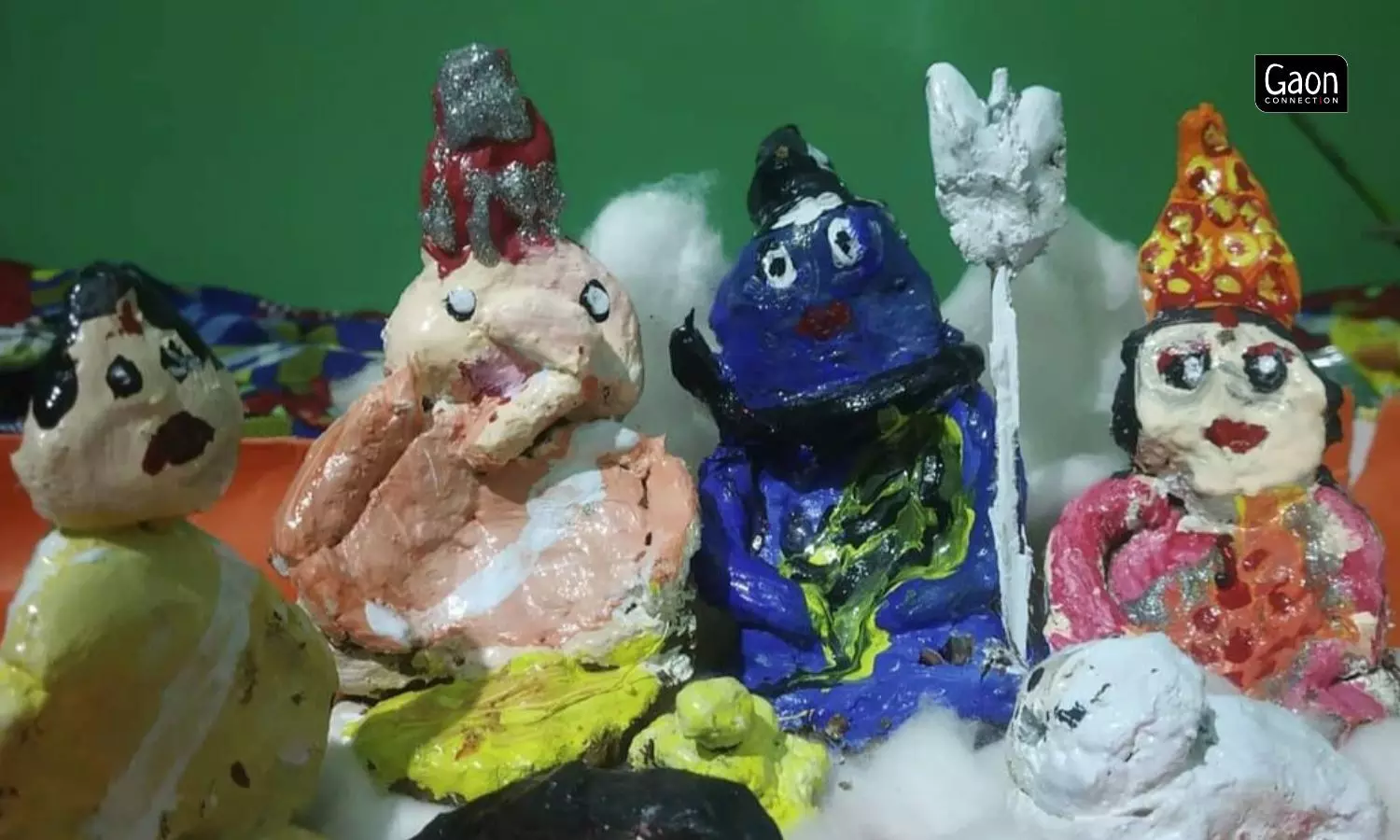Uttarakhand celebrates the wedding of Shiva and Parvati today, during the Harela Festival
Eleven days of preparations lead to the Harela Festival where people pray to clay likenesses of gods and goddesses, and make them delicious offerings for peace, prosperity and abundance of food grains.
 Megha Prakash 17 July 2023 9:22 AM GMT
Megha Prakash 17 July 2023 9:22 AM GMT

Harela is celebrated in the Kumaon region of Uttarakhand to celebrate the wedding of Shiva and Parvati. All Photos by Rajeev Pandey.
Every year on July 16 or 17, a festival called Harela is celebrated in the Kumaon region of Uttarakhand to celebrate the wedding of Shiva and Parvati. The preparations begin a full eleven days earlier when clay idols of various deities called digare are made using eco-friendly material.
Also, a mix of mustard, maize, horsegram, soybean, and urad seeds are sown in a bamboo basket called ringal, and allowed to germinate. The seeds are sown to the chanting of mantras and then covered and kept in a dark place to germinate. The prayers are for prosperity and abundance in agriculture.
The clay idols of Shiva and Parvati, along with their family made up of Ganesh and Kartik are placed in the same container where the seeds were planted. A damru, trishul, chandrama (moon), a mouse (the vehicle of Lord Ganesha), and Nandi (Shiva's mode of transport) are also made of clay and kept there.
The clay idols of Shiva and Parvati, along with their family made up of Ganesh and Kartik are placed.
Also Read: Puthandu Vazhuthugal: Neem flowers, jaggery and raw mangoes on Tamil New Year
On the eleventh day, the 'harela' or the sprouted grains are cut from their base by the elders in the house and some of the green sprouted grass is placed behind the ears of the younger generation, as a blessing. The harela is also placed at the sides of the front door of the homes.
“Usually red clay is sourced from a havan kund or from under a banana tree in a temple courtyard. It is sieved then kneaded smooth into a dough along with cotton to stabilise it. This prevents the idols from developing cracks. Once the idols are dry, they are covered with a paste of rice flour,” Shashi Joshi, a resident of Almora, explained to Gaon Connection. Some people still use natural colors to paint the idols. Earlier, eco-friendly and natural colours made from indigo, the kilmora root, turmeric and geru.
No festivity is complete without its own special prasad or offering and the puye is something that is always made during Harela.
The special prasad or offering that is prepared during Harela.
“Semolina and cream are beaten into a fluffy consistency and allowed to rest for 15-20 minutes after which milk and sugar are added and beaten again. The batter gets slightly fermented in the process, after which spoonfuls of it are dropped into hot oil and deep fried,” Ritu Bisht, an inhabitant of Dehradun, told Gaon Connection.
Also Read: Flavours of Uttarakhand: Himalayan state to get its first spice garden in Sauni village, Almora
Along with the puye is another sweet dish made of semolina, sugar and milk and also deep fried. It is called singal, said Rajeev Pandey of Bhowali, a few kilometres away from Haldwani. “It is a jalebi look alike,” Pandey told Gaon Connection.
After offering prayers, sweets and fruits, these dikare are dissolved by pouring water over them.This symbolises the immersing of the idols in the waters of the holy rivers.
#Uttarakhad harela #festival #kumaon
More Stories




